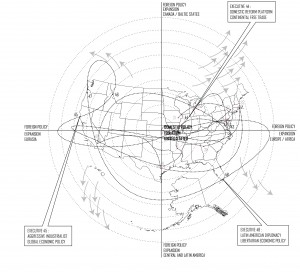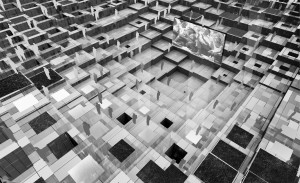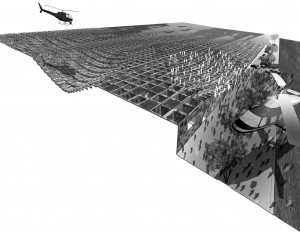Responsive Monument is a proposal for a mobilized national capitol capable of reacting to the people it serves.
A design for a new White House, which serves as a mobilized, responsive monument, accountable to fluctuating public opinion, domestic, and international policy, creating a lasting civic legacy for the nation’s leaders.
BORDER / CENTRAL
The geographic location of a nation’s capitol has historically suggested both a center of power, and a directive of communicative exchange.
While a centrally located capital implies a sense of protective isolationism, a border capital suggests an intention for exchange. Washington DC, a model of exchange with its western heritage in the early post-colonial years of American development, is no longer representative of its internal constituency, and is no longer indicative of the increasingly dynamic us position on the world stage. The capitol could benefit from a more flexible arrangement.
MOBILIZING CAPITOL
By literally mobilizing the capital, relocating it for each presidential term, the seat of power becomes geographically indicative of each executive’s posture towards domestic and foreign policy. This decentralizes the government, long entrenched in Washington, and uproots the people’s representatives as well, connecting elected officials with a wider cross-section of the American populace.
When the terms expire, and the presidential residence is vacated, the documents and affects that have collected over the term can be immediately archived, with each White House itself being opened to the public as an authentic Presidential Library. With political enthusiasts and tourists following the new trajectory of presidential power, new lines of influence are traced into a long-stagnant domestic map, forging new areas of interest for development and speculative interest for potential new governmental seats. Towns and cities would vie to host the national government every four years, much like world cities currently compete to host the Olympic Games. Admittedly short cycles of governmental rule are exploited to invigorate the electoral and legislative processes, activating the populace and elected officials in a new era of competitive politics.








